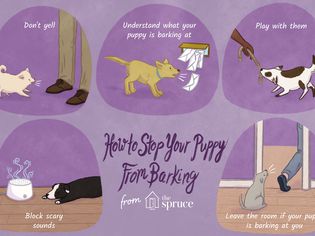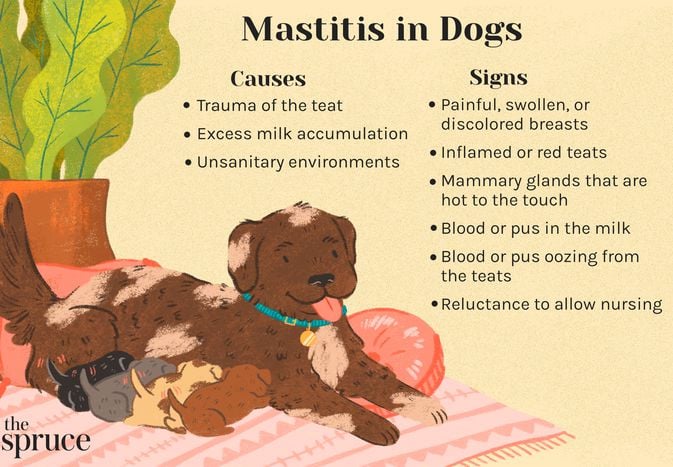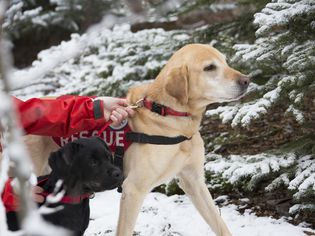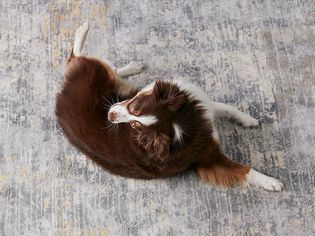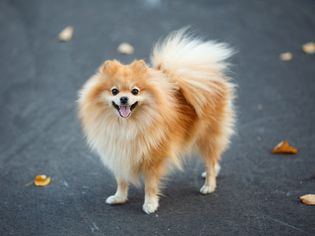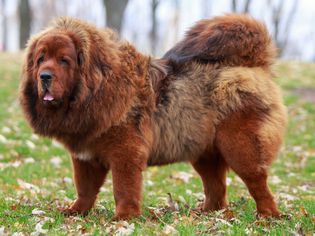The dachshund (pronounced dahks-hund) is an energetic, lovable small dog breed from Germany with an endearing personality, and is known for a varied coat texture and color, short legs, floppy ears, and big chest.
This dog is affectionately called a doxie, wiener dog, hotdog, or sausage dog, and this cute pint-size breed definitely leaves a lasting impression. The dachshund is bred as standard or miniature size, but the traits of this breed are similar for both.
Learn all about the dachshund, including their temperament, care needs, and more.
Breed Overview
GROUP: Hound
HEIGHT: 8 to 9 inches (standard); 5 to 6 inches (miniature)
WEIGHT: 16 to 32 pounds (standard); up to 11 pounds (miniature)
COAT: Varieties include smooth (shorthaired), longhaired, and wire-haired
COAT COLOR: Colors include (but not limited to) black, tan, fawn, beige, blue, chocolate, and red with various markings such as dapple, piebald, brindle, and sable
LIFE SPAN: 12 to 16 years
TEMPERAMENT: Clever, playful, stubborn, devoted, lively, independent, courageous
HYPOALLERGENIC: No
ORIGIN: Germany
Click Play to Learn More About the Endearing Doxie
Characteristics of the Dachshund
The dachshund can be a loving companion, lapdog, and even a family dog. Despite their size, the dachshund tends to be quite protective and alert, so the breed can also make an excellent watchdog.
They bark loudly, though, so they can disturb your neighbors if you live close to them. Even though their bark can alert you to things going on outside your home, it might not always be welcomed.
| Affection Level | High |
| Friendliness | Medium |
| Kid-Friendly | Low |
| Pet-Friendly | Low |
| Exercise Needs | Medium |
| Playfulness | High |
| Energy Level | Medium |
| Trainability | Medium |
| Intelligence | Medium |
| Tendency to Bark | High |
| Amount of Shedding | Medium |
History of the Dachshund
The dachshund originated in Germany as a hunting dog. Though their origins can be traced as far back as the 15th century, the breed's development really began in 17th century Germany.
Called dachshunds, which translates as "badger dogs," these short hounds did just that—they hunted badgers. Their stature, determination, and independence were ideal for digging, entering tunnels, and of course, fighting badgers. Their flap-down ears help keep dirt and debris out when burrowing.
Further development of the breed created two sizes. Historically, the standard size continued to hunt badgers as well as wild boar, while the miniatures pursued hare and foxes. There's also a middle-size dachshund in Germany.
Dachshunds were brought to the U.S. as early as 1885 when the breed was recognized by the American Kennel Club (AKC), but increased in popularity in the 1930s and 1940s. To prevent them from being ostracized during World War II, they were temporarily called badger dogs in the U.S. They remain extremely popular dogs to this day.
Dachshund races, known as "wiener races," are popular in some places for amusement. However, these are opposed by the Dachshund Club of America out of concerns over whether racing might injure the dogs.
A wiener dog named Waldi was the mascot of the 1972 Summer Olympics because they were held in Germany.
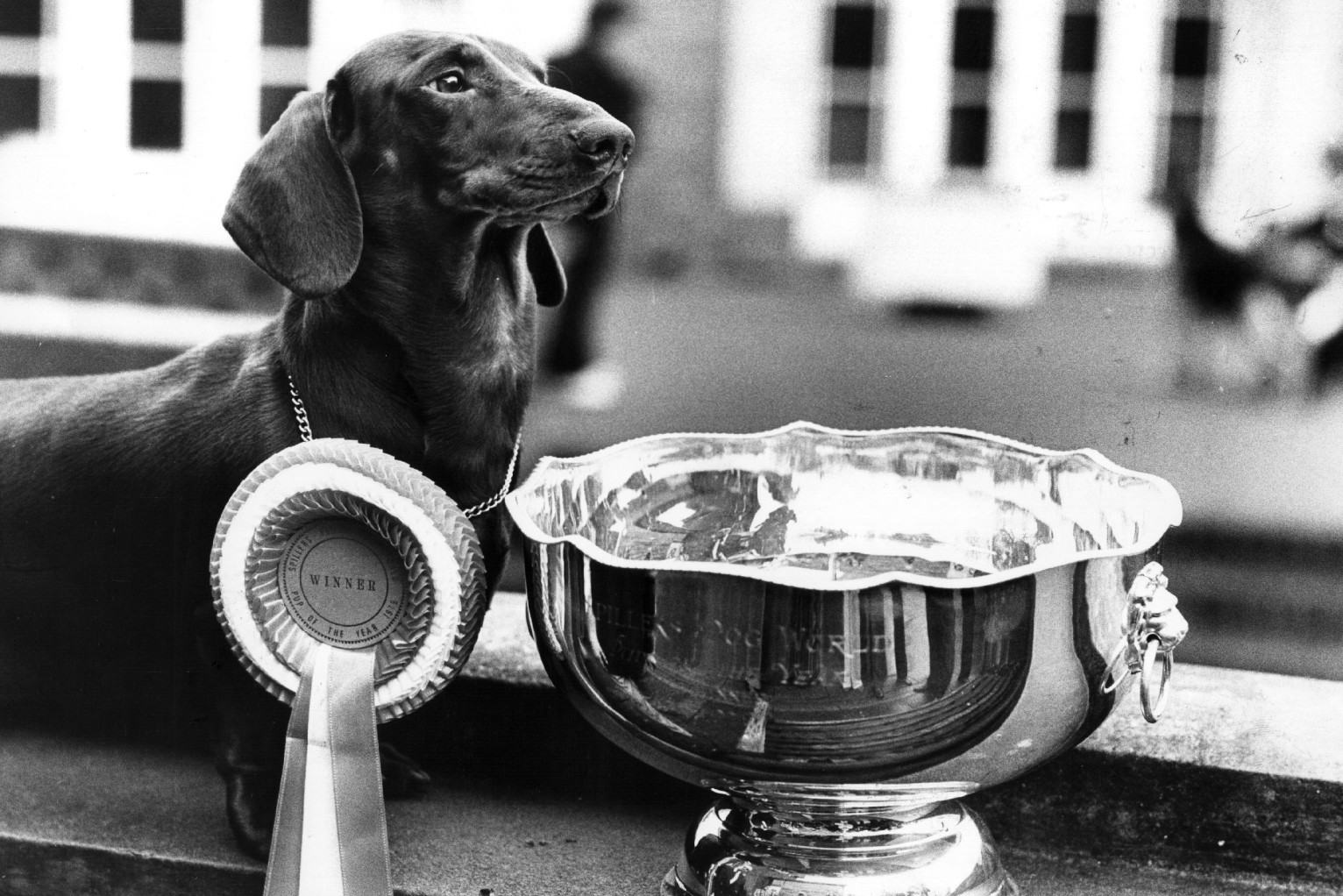
Dachshund Care
Doxies are tenacious, which was good in hunting dogs, but they might annoy you with this trait at home. The propensity to dig may result in damage to your potted plants and yard. Keep that in mind and provide alternative activities for your pet.
Dachshunds have a high prey drive, so they may not be a good match for a household that includes pet rodents or other small animals. They usually get along well with other dachshunds but tend to want to be the top dog in a multi-pet household.
Exercise
Dachshunds are naturally prone to develop obesity. To avoid weight gain, your dachshund should get regular exercise.
Daily walks are recommended, with a couple of 10-minute walks per day at the minimum, plus some playtime, such as playing fetch. But proper nutrition is also key and you should be sure to avoid overfeeding.
Grooming
The grooming needs of the dachshund depend upon their hair coat. The longhaired variety requires daily brushing but does not typically need professional grooming. Smooth dachshunds have a higher shedding rate than other varieties.
All dachshunds should receive baths as needed (frequently if skin problems exist). And when it’s cold outside, your doxie might benefit from wearing a sweater that will keep them warm.
Be sure to do regular nail trims in order to prevent problems with the paws. Those flap-down ears also need attention, so keep clean and monitor for signs of infection or mites. Maintain good oral hygiene by brushing your dog's teeth a couple of times a week.
Training
While loved for their bold personality, the dachshund may have a tendency to be stubborn, protective, and defensive. Many dachshunds are also known for their tendency to bark. Proper obedience training can turn these potential problems into beneficial qualities.
Dachshunds can be difficult to housebreak. You will need to be persistent and you may wish to use crate training. Be prepared with puppy pads and cleaning supplies.
Common Health Problems
Responsible breeders strive to maintain the highest breed standards as established by kennel clubs like the AKC. Dogs bred by these standards are less likely to inherit health conditions. However, some hereditary health problems can occur in the breed. The following are some conditions to be aware of:
- Intervertebral disc disease: You'll need to take care to protect your dachshund's back. As many as 25% of dachshunds have intervertebral disc disease, which can result in their spinal discs deteriorating and being susceptible to bulging when they have back strain or injury.
- Diabetes mellitus: This is a common chronic, but manageable disease found in younger and older dogs that have an abnormal response to insulin. Excessive thirst and weight loss are two early symptoms.
- Epilepsy: This disease of the brain causes seizures in dogs. There are no known causes of this disease.
- Gastric dilatation-volvulus: Commonly known as bloat, this emergency problem typically occurs in larger breeds, but dachshunds have large chests which put them at risk for this problem, too. The stomach cavity becomes trapped with gas or air that the dog cannot expel.
- Acanthosis nigricans: Portions of the dog's skin can become darkened and thickened. This disease may be caused by allergies or hormones, and it can be controlled.

The Spruce / Kelly Miller
Diet and Nutrition
The amount of food needed will depend on the size of your dachshund, activity level, age, and other factors. Be sure to provide high-quality food and monitor your dog's intake and weight.
Take action early if you notice your dog is getting overweight and talk to your veterinarian about the appropriate feeding schedule, type of food, and amount to keep your dog at a healthy weight. This will help your dog achieve their natural life span.
Where to Adopt or Buy a Dachshund
Dachshund puppies are popular so expect to pay between $500 to $1,500 for this dog from a breeder.
Keep in mind that if you do find a dachshund that is described as having a rare color or rare markings, such as a "fawn (Isabella)" or "double dappled" dachshund, they may have health issues. Breeding this dog for looks without considering health issues is unethical and unsafe. Further research can help you identify a truly rare but healthy dog or one that may be compromised.
If you think you'd like to adopt a dachshund, start by contacting a reputable organization such as:
- Dachshund Club of America
- All American Dachshund Rescue
- Dachshund Rescue of North America
These groups will be able to provide guidance and the next steps for adoption. If you aren't certain the breed is right for you, you may be able to try foster care to test if a dachshund is a good fit for your home on a trial basis.
Dachshund Overview
Dachshunds can make wonderful companions for the right people. These affectionate dogs are protective and loyal. But they bark a lot and have a high prey drive that can make them want to chase animals, including other pets.
Pros of Dachshunds
- Good guard dogs
- Comical and engaging
- Snuggly and affectionate
Cons of Dachshunds
- Loud barking
- Tough to housebreak
- Can be difficult with kids or other pets
More Dog Breeds and Further Research
As with any breed, if you think the dachshund is right for you, be sure to do plenty of research before obtaining one. Talk to other dachshund dog parents, reputable breeders, and dachshund rescue groups to learn more.
If you are interested in comparing similar breeds, check these for pros and cons:
- Beagle
- Miniature Schnauzer
There are many different dog breeds out there. With a little research, you can find the right one to bring home.
- Are dachshunds good family dogs?
With proper socialization and training, dachshunds can be good family pets. They can get along with children who know how to interact with them gently, and can live with other dogs. However, because of their prey drive, they might not be suitable for homes with small pets.
How much does a dachshund cost?Depending on your location and availability, dachshund puppies cost anywhere from $500 to $2000.
What is a dapple dachshund?Dapple dachshunds have a dappled coat of many colors; it's more like a swirled or dotted pattern on top of a solid coat.
What is a piebald dachshund?Piebald dachshunds have cream or white coats, with spots and patches on top of that.
More like this

